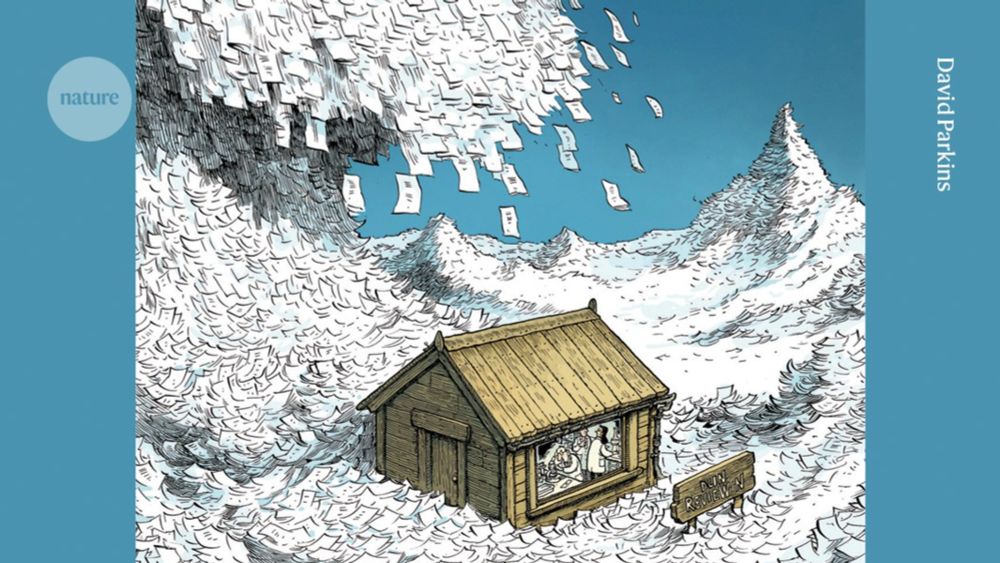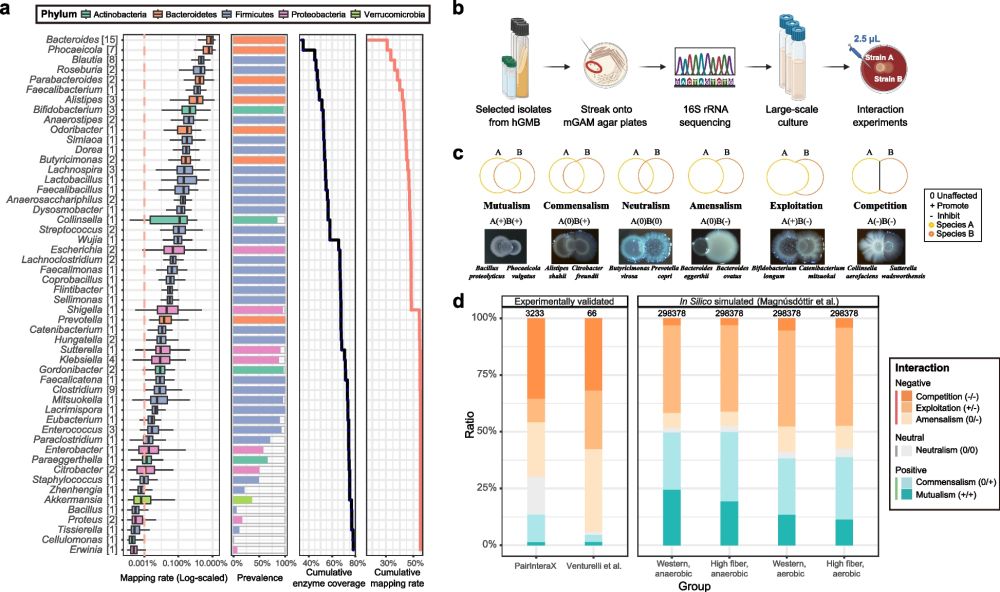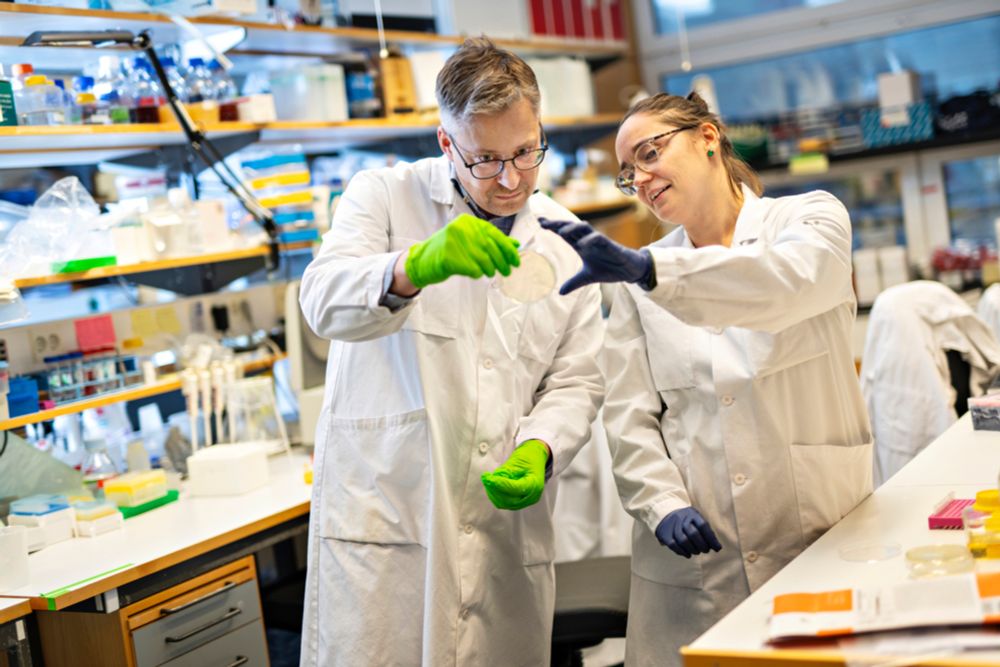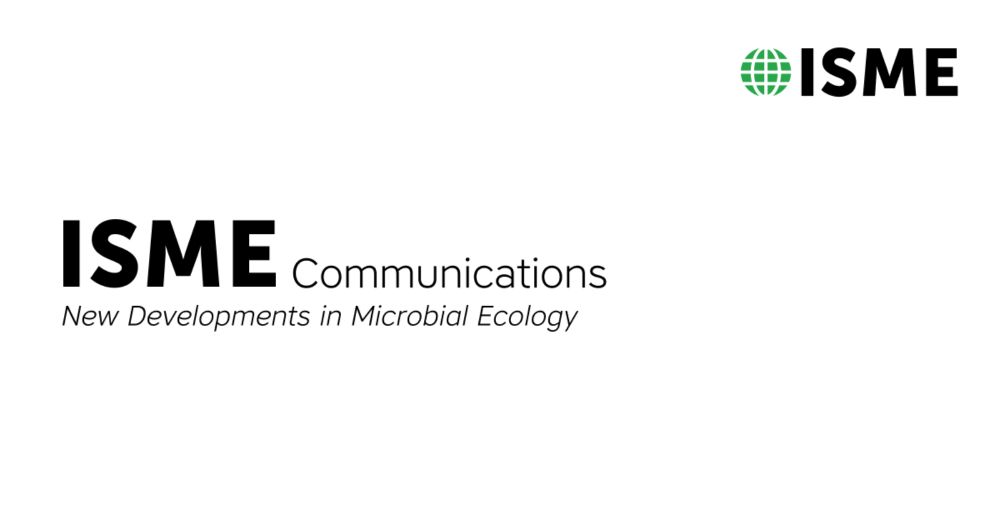I experience the same as Editor, but also so many Review requests per week, it´s crazy. Just too many submissions are flooding the system. There could be a solution, when every author holding a PhD would have to review for Journals they got articles accepted. Fair distribution of the work?
06.09.2025 10:42 — 👍 1 🔁 0 💬 0 📌 0

The peer-review crisis: how to fix an overloaded system
Journals and funders are trying to boost the speed and effectiveness of review processes that are under strain.
As a writer, teacher, AE, and reviewer, i share lots of their views. We need to work together to improve the system.
The peer-review crisis: how to fix an overloaded system www.nature.com/articles/d41...
08.08.2025 16:06 — 👍 4 🔁 3 💬 0 📌 0
With a new fungal isolate collection derived from specialized carbon media, we developed the FungiResp approach for soil fungal carbon use trait characterization. Phylogenetic trait imputation allowed to characterize functional shifts of soil fungal communities in response to substrate availability
17.07.2025 20:07 — 👍 2 🔁 0 💬 0 📌 0
Many common fungi sequenced in agricultural soils showed surprisingly limited activity on complex carbon sources like cellulose and starch. Complex carbon use ability was an important trait differentiating fungal isolates, predicting functional community shifts in soil.
17.07.2025 20:07 — 👍 1 🔁 0 💬 1 📌 0
Looks like a very useful tool, congrats to the group of Fernanda Pinheiro. A parallel R package would be nice :)
15.07.2025 19:59 — 👍 0 🔁 0 💬 0 📌 0

📢✨ONLINE FIRST!✨
How do anthropogenic drivers influence @soilbiodiversity change? Find out here!
@bartoszbartk.com @eisenhauerlab.bsky.social @mrillig.bsky.social @christianristok.bsky.social @doreenbabin.bsky.social Jörg Römbke, Frank Galante, Christina Lachman
soil-organisms.org/index.php/SO...
23.06.2025 08:24 — 👍 13 🔁 5 💬 0 📌 1

Depiction of growth system categorization and network criteria used in this study.
Systematic mapping of experimental approaches to studying common #mycorrhizal networks in arbuscular mycorrhiza
#Review by Anika Lehmann and @mrillig.bsky.social
📖 nph.onlinelibrary.wiley.com/doi/10.1002/...
#LatestIssue
18.06.2025 14:31 — 👍 3 🔁 1 💬 0 📌 1
And congratulations to Yongxing Cui to this global analysis of microbial nutrient limitations, just published in @pnas.org Thank you for the fun collaboration
23.05.2025 20:09 — 👍 6 🔁 1 💬 0 📌 0
The AmazonFACE project is offering post doc scholarships, based in Manaus, Brazil!
14.04.2025 15:48 — 👍 8 🔁 8 💬 0 📌 0
Fungal mycelia are finally getting the spotlight they deserve! And how could they not? Their morphology is just stunning! We tracked our friend Absidia sp. forming this intricate exploratory mycelium, showcasing unique elongation and branching patterns #fungi #mycelium #networks
18.03.2025 05:04 — 👍 65 🔁 13 💬 2 📌 1
Interesting proposal to classify ectomycorrhizal fungi along a continuum from miners to absorbers. 👇🍄 An inspiring read, so much potential for studies testing this trait spectrum! 🤓 🧪🌍
07.04.2025 14:01 — 👍 25 🔁 10 💬 2 📌 0
So true
04.04.2025 15:45 — 👍 2 🔁 0 💬 0 📌 0

A researcher on a boardwalk in a DANK hawaiian forest on Molokai.
RP PLS! Iʻm hiring 3 postdocs at U Hawaiʻi to study yeast diversity and evolution, marine fungi, and the genomics of microbiomes in experimental foodwebs. All of these projects have existing datasets and LATITUDE to pursue individual interests and "blue sky" ideas www.dropbox.com/scl/fi/5d7u4...
26.11.2024 19:19 — 👍 100 🔁 87 💬 1 📌 5
ScienceDirect.com | Science, health and medical journals, full text articles and books.
I proudly present a new review paper of my group that just came out in Trends in Microbiology @cp-trendsmicrobiol.bsky.social
with Leonardo Ona and Shryli Shreekar
Disentangling microbial interaction networks
Open access link:
authors.elsevier.com/sd/article/S...
05.03.2025 06:56 — 👍 92 🔁 38 💬 3 📌 3
Such an amazing study 👍
27.02.2025 20:20 — 👍 1 🔁 0 💬 0 📌 0

Phages Affect Soil Dissolved Organic Matter Mineralization by Shaping Bacterial Communities
Viruses are considered to regulate bacterial communities and terrestrial nutrient cycling, yet their effects on bacterial metabolism and the mechanisms of carbon (C) dynamics during dissolved organic matter (DOM) mineralization remain unknown. Here, we added active and inactive bacteriophages (phages) to soil DOM with original bacterial communities and incubated them at 18 or 23 °C for 35 days. Phages initially (1–4 days) reduced CO2 efflux rate by 13-21% at 18 °C and 3–30% at 23 °C but significantly (p < 0.05) increased by 4–29% at 18 °C and 9–41% at 23 °C after 6 days, raising cumulative CO2 emissions by 14% at 18 °C and 21% at 23 °C. Phages decreased dominant bacterial taxa and increased bacterial community diversity (consistent with a “cull-the-winner” dynamic), thus altering the predicted microbiome functions. Specifically, phages enriched some taxa (such as Pseudomonas, Anaerocolumna, and Caulobacter) involved in degrading complex compounds and consequently promoted functions related to C cycling. Higher temperature facilitated phage-bacteria interactions, increased bacterial diversity, and enzyme activities, boosting DOM mineralization by 16%. Collectively, phages impact soil DOM mineralization by shifting microbial communities and functions, with moderate temperature changes modulating the magnitude of these processes but not qualitatively altering their behavior.
New paper out with collaborators Tida Ge, Shuang Wang and others: Phages Affect Soil Dissolved Organic Matter Mineralization by Shaping Bacterial Communities doi.org/10.1021/acs....
03.02.2025 11:14 — 👍 3 🔁 3 💬 0 📌 0
Such nice examples of creative processes in science. And a fun podcast 👍
18.01.2025 22:04 — 👍 6 🔁 1 💬 0 📌 0
Soils matter! - Prof of Soil Sciences and Soil Resources at Ruhr University Bochum
soil, water, & environmental science; remediation; soil & groundwater pollution dynamics; subsurface hydrology. Personal opinions.
Relaying microbiology news, articles and comments relevant to aspects on bacteria, fungi, viruses and other microbes / microorganisms. Microbes are 💪
We study the #ecology of #soil #microbes, how #communities depend on & respond to their #environment & run global #biogeochemistry; part of @MicroBioGeo_LU. biology.lu.se/johannes-rousk
Geo-Biosphere Interactions (Prof @uni_tue: biogeochemist, microbial/soil ecologist): curious about biota driving element cycles and geo-bio-systems' trajectories - from single cell metabolism to global scale
I do science about the ocean, organic carbon, weird microbes and their enzymes. Associate Prof, Marine and Environmental Biology, USC. He/him.
Professor at the NYU School of Medicine (https://yanailab.org/). Co-founder and Director of the Night Science Institute (https://night-science.org/). Co-host of the 'Night Science Podcast' https://podcasts.apple.com/us/podcast/night-science/id1563415749
Epigenetic Inheritance, Neuroscience & anything biology-related
https://www.odedrechavilab.com/
https://www.qedscience.com
Organizer of “The Woodstock of Biology”
TED: https://shorturl.at/myFTY
Huberman Lab Podcast: https://youtu.be/CDUetQMKM6g
Director of Mycology and Microbiology Center
#mycorrhiza #fungal ecology #microbiology plant-microbe interactions #mushroom hunting #biodiversity #conservation #molecular ecology #biogeography #DNA-based taxonomy #long-read sequencing #PacBio #
Soil carbon & climate feedbacks | Prof at Oregon State Univ | PhD at UC Berkeley | climbing, skiing, and all things outdoors 🌿🍃🍂 kgeorgiou.com
BayCEER, the Bayreuth Center of Ecology and Environmental Research, University of Bayreuth @unibayreuth.bsky.social
https://www.bayceer.uni-bayreuth.de/
MicroBiologist 🙆🏽♀️🦠🔬working on plastic-pollution in soil @RilligLab Berlin. Interested in our future live in the plastisphere - of human and microbes
Interested in Science/Soil biology/Fungi/Agriculture/Climate/society
I like running and vegan donuts
Soils, microbes, models. Some eco-evo and system analysis.
PhD student @ManzoniLab, Stockholm University, he/him.
Dr of Ecology
Conservation Mycologist
Member @iucnfungi.bsky.social
One teenage boy 🏉🥁⚛️, two black cats 🐾
#CitizenScience #Bioinvasions #UrbanBiodiversity #Conservation #SustainableUse
Reuniting #WomenInMycology
🐦>>🦋
🔗 https://linktr.ee/cfe_mycolab
The International Mycological Association, founded in 1971, represents the interests of over 30,000 mycologists worldwide. It is a not for profit organisation, the purpose of which is the encouragement of mycology in all its branches.
Lake ecologist who studies nutrients and plankton at Trent University. Scientific method dogmatist. frostlab.ca



















